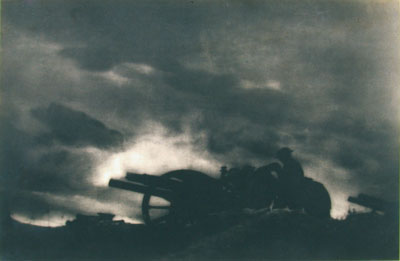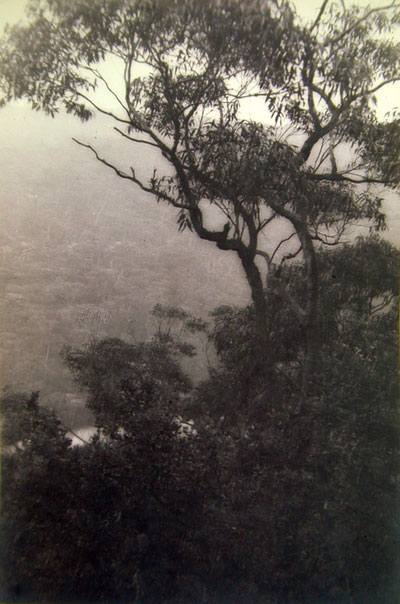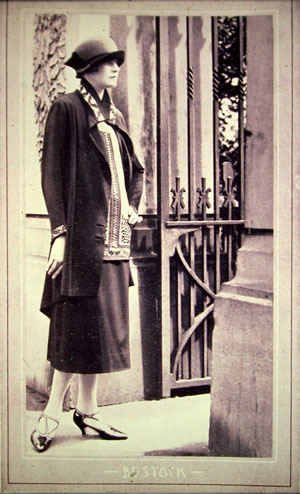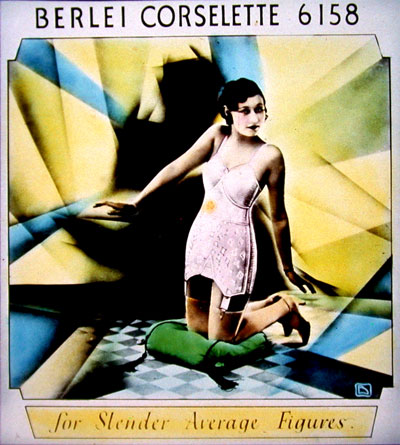main biography | reference page | image page
CECIL.
W. BOSTOCK
1884-1939
Cecil
Westmoreland Bostock was born in England and came with his parents
to Sydney, New south Wales, in 1888. His father, George,
a bookbinder,
died in 1892. Bostock was first apprenticed as an engineer
in the Waverley Tramway Workshop but left work and home to
pursue an artistic career
around 1901.
Little
is known of Bostock’s activities
until 1916, by which time he was a member of the Photographic
Society of New
South Wales,
the Commercial Artists Association and the Sydney Camera
Circle, of which he was a founder. He appears to have set
up his own
studio in
Phillip Street at this time and it was there that the Sydney
Camera Circle held meetings until 1921.

Day Breaks - Cold Shrieking~Bloody, 1918-1919
Bostock
served overseas on war service in the infantry from 1917—18
and was able to spend six months in London in 1919,
before his discharge in Sydney in 1920.
In
London Bostock joined the Royal Photographic
Society and he arranged a one-man show of his watercolours
of war scenes in 1920. On his return Bostock married a girl he
had met in London
and worked as a professional photographer.
He had studios
at a number of city locations over the next twenty years and specialised
in illustration
for advertising and industrial magazines — a new
field at that time.
Bostock
was a contradictory and erratic personality. His graphic work was colourful
and decorative
and he
was a
skilled craftsman
in bookbinding
and carpentry.
In photography he was a perfectionist
in technical matters, yet an erratic businessman always
leaving
jobs to
the last moment.
He was active in photographic societies and a champion
of art photography.

A Decoration
In
1917 he produced an album proudly titled
A
Portfolio of Art Photographs
which contained ten original photographs, limited
to an edition of twenty-five copies and hand bound. The
photographs
were,
like most
of his work, austere and without the soft focus,
painterly effects of his pictorialist colleagues.
Bostock
edited and designed the catalogues of the pictorialists’ big
exhibitions, ‘The Australian Salon of Photography”,
held in 1924 and 1926, as well as the catalogue of
the Contemporary Camera
Groupe exhibition in 1938.
The latter was the first
independent exhibition of ‘modern” photography
and Bostock was alone amongst the pictorialists in
his interest in experimenting with abstract
forms
as seen in plates 54 and 60 of Silver & Grey.
His
concept of art photography does not appear to have
been limited
to a particular
style.
Bostock
died of cancer and his studio effects were auctioned to cover his debts.
His body of work
was
thus scattered
and only a few of his
prints have been located.
Bostock’s commercial
work can be seen in The Home magazine and some of
his exhibition work in The Australasian
Photo-Review.
He
was also largely responsible for the illustrations in The
Book Of The Anzac Memorial
N.S.W. published in 1934.
A
legacy also remained through his apprentice Max
Dupain, who worked in his studio from 1930—33.
above
text
based on Gaël Newton's Newton's Silver & Grey

main biography | reference page | image page



